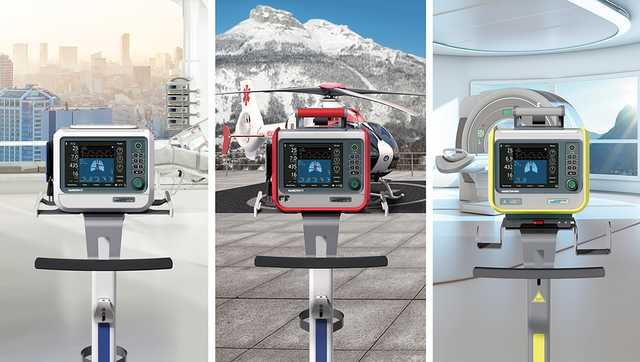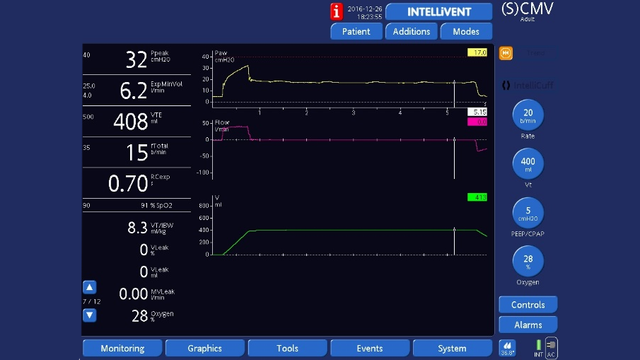
Author: Simon Franz
Date of first publication: 14.07.2017

Background
Even if the idea of a “safe” plateau pressure is already being questioned, it is still standard of care to use it for tailoring lung‑protective ventilation in acute respiratory distress (ARDS) patients
Display of Pplateau as monitoring parameter
Due to the valveless pneumatics in the HAMILTON‑C1/T1/MR1 ventilators, it is not possible to obtain the Pplateau by performing an inspiratory hold maneuver. Nevertheless, Pplateau is still available as a monitoring parameter and maybe displayed depending on your ventilator's software.
| HAMILTON‑C1/T1/MR1 SW < v2.2.0 | HAMILTON‑C1/T1/MR1 SW ≥ v2.2.0 |
|---|---|
| End‑inspiratory pressure always displayed as Pplateau. Please consider that if an end‑inspiratory flow is present, the Pplateau displayed is higher than the actual Pplateau. | Pplateau is only displayed if the end‑inspiratory flow is close to zero. The Pplateau displayed can still be higher than the actual Pplateau. |
Calculating Pplateau if end‑insp flow not near zero
A possible workaround for calculating Pplateau in situations where the end‑inspiratory flow is not close to zero or the pressure measured end‑inspiratory seems inaccurate:
- Calculate driving pressure (∆P): ∆P = VTE/Cstat
- Calculate Pplateau: Pplateau = ∆P + PEEP
This calculation is dependent on an accurate Cstat measurement, which means there is no significant patient effort occurring. Pinsp should be at least ~10cmH2O.
Pplateau = (VTE ml / Cstat ml/cmH2O) + PEEP cmH2O
Example
VTE: 450 ml; Cstat: 50 ml/cmH2O; PEEP: 8 cmH2O
(450 ml / 50 ml/cmH2O) + 8 cmH2O = 17 cmH2O
Pplateau = 17 cmH2O
∆P = 9 cmH2O
Another benefit is that you get the ∆P as a side product of your calculations. ∆P is strongly associated with survival in ADRS patients and may therefore be the more interesting parameter
Relevant devices: HAMILTON‑C1/T1/MR1 (all software versions)
Footnotes
References
- 1. Loring SH, Weiss JW. Plateau pressures in the ARDSnet protocol: cause of injury or indication of disease?. Am J Respir Crit Care Med. 2007;176(1):99‑101. doi:10.1164/ajrccm.176.1.99b
- 2. Amato MB, Meade MO, Slutsky AS, et al. Driving pressure and survival in the acute respiratory distress syndrome. N Engl J Med. 2015;372(8):747‑755. doi:10.1056/NEJMsa1410639
Related articles. Get a deeper look

Driving pressure in ARDS patients
ARDS is characterized by lung collapse and consolidation leaving just a small portion of aerated lung remaining, which is at risk of ventilator‑induced lung injuries (baby‑lung concept).

How to measure driving pressure
Airway driving pressure is associated with clinical outcomes in ARDS, post‑surgical, and normal‑lung patients, and is a measure of the strain applied to the respiratory system and the risk of ventilator‑induced lung injuries. Evidence suggests we should keep driving pressure below 14 cmH2O. But how can we measure it?


